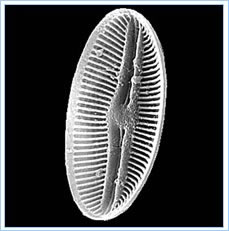
Life and Living
- The Big Picture
- Introduction to Life and Living
- Diversity and Classification
- Ecology
- Virtual Laboratory
- Games and Quizzes

Somerville House Middle School Science On-line: Year Seven |
|
|
Different Kinds of Cells I
All cells have at the very least a cell membrane surrounding cytoplasm. The DNA may or may not be enclosed in a nucleus. These drawings are not to scale.
 |
Bacteria have a cell wall outside the cell wall, but no organelles or nucleus. Instead the DNA is free in the cytoplasm. Bacteria often have flagella (as shown) or cilia which they beat to provide movement. Bacteria are called prokaryotes because they don't have a nucleus. |
 |
The Protista are a group of single celled organisms that don't really fit anywhere else. Protozoans are more like animal cells, while algae are more plant-like. image from www.microbeworld.org/.../gallery/ gallery_10_dip.htm |
Now go to Different Kinds of Cells II